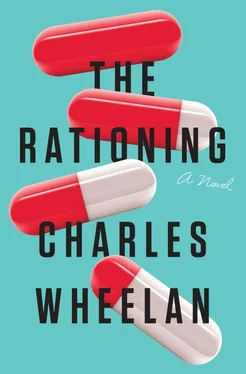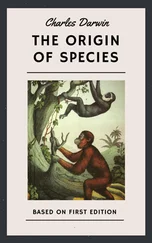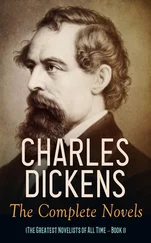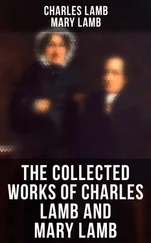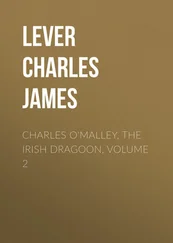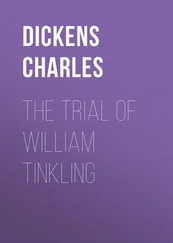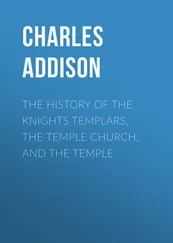“I’m aware of that.”
“Line one.”
“Okay, thank you.”
The Majority Leader stood and carefully lifted his jacket off the back of the chair. He was clearly invigorated by the phone calls. He put on his jacket, buttoning it deliberately. He was not a thin man, as I have noted, but he must have had a good tailor, because the jacket fit neatly over his sizable girth. The aide continued to linger in the doorway, looking at the phone on the desk, where line one was still blinking red. As the Majority Leader buttoned his last button, he looked at me and said, “There are sandwiches upstairs in the kitchen. Are you hungry?”
THE PRIME MINISTER’S FLIGHT—DESIGNATED AIR INDIA One—landed in Germany and refueled without incident. The camera crew on board broadcast footage of the Prime Minister and his family resting comfortably in a small compartment built especially for them at the front of the cargo plane. There were beds, a bathroom, and a makeshift shower. The Prime Minister walked the camera crew through the cargo hold, showing off the pallets of Dormigen. “Five hundred thousand doses,” he explained to the viewers. “Each with the potential to save an American life.” As Air India One left Germany, the President was landing in Orange County for his tour of the areas that had been wiped out by the wildfires. “The Dormigen flight is on schedule. No more delays,” the Chief of Staff informed him.
“Then let’s make sure we stay on schedule,” the President replied. He wanted to be back in D.C. with a comfortable cushion for the Prime Minister’s arrival. The California visit went as planned—some pro forma visits to damaged areas, a breakfast with firefighters, meetings with local elected officials, and most important, a declaration of the affected counties as a federal disaster area. On the flight back to Washington the Chief of Staff briefed the President on the process for distributing the Dormigen upon the Prime Minister’s arrival. “Governors Goolsbee and Spencer are back on board with the plan,” she said.
“They had a change of heart, did they?” the President replied. “What about Hazlett?”
“He’s been very cooperative.”
The President laughed. “He’s not getting the Sea Snake Sonar back,” he said. The Chief of Staff shrugged. That was a problem for next week. “I’d like to send the Majority Leader a bottle of that Irish whiskey,” the President continued.
“That’s a nice idea,” the Chief of Staff agreed. “I’ll do that.”
With that, for the first time since the beginning of the Outbreak, the President found himself with nothing urgent to do. He watched a romantic comedy for a while and then drifted off to sleep.
The Indian Prime Minister, however, had not played his last card.
OVER THE NORTH ATLANTIC, ROUGHLY TWO HUNDRED NAUTICAL miles off the coast of Newfoundland, the Prime Minister took the controls of Air India One. The President was working in his office in the family quarters of the White House, having showered and dressed after the whirlwind California trip, when the Chief of Staff burst in. “Turn on the TV.”
CNN was showing live footage of the Prime Minister at the controls of the 747, ostensibly flying the plane. He checked several gauges, conversed with his copilot, and generally went through the motions of flying a plane. A banner along the bottom of the screen explained: “Indian PM takes the pilot seat on historic lifesaving flight.”
“He’s a pilot,” the President offered.
“Does he know how to fly a 747?” the Chief of Staff asked.
“God, I hope so.”
“It’s probably on autopilot, don’t you think?” the Chief of Staff said optimistically.
The two of them watched the live broadcast, transfixed like so many other viewers around the world. Some four hundred million people were watching in India as the Prime Minister piloted Air India One toward Washington. Even in bustling Mumbai, where business types typically dismissed political shenanigans, groups of people gathered informally in front of televisions in restaurants and cafés to watch their Prime Minister at the controls of the 747. The film crew on board broadcast the cockpit audio, so that viewers could hear communications between the flight crew and air traffic control, beginning when Air India One made radio contact with the air traffic station in Gander, Newfoundland.
“Greetings, Air India One,” a voice crackled over the radio, with a hint of a Canadian accent. “Maintain your current altitude and bearing.”
“Roger that,” the Prime Minister answered confidently.
Soon thereafter, the plane was handed off to the FAA Washington Center in Leesburg, Virginia. “Washington Center, this is Air India One,” the Prime Minister said loudly.
“Go ahead, Air India One,” a female voice responded.
“We are requesting permission to enter American airspace.”
“Roger that, permission granted,” the woman replied. And then, with over a billion people listening, she continued, “On a personal note, Captain Joshi, may I be the first to officially welcome you and your crew to the United States of America.”
“It’s an honor, ma’am,” the Prime Minister replied.
In the White House, the President said, “The guy is a fucking genius—a political genius.”
The Chief of Staff replied, “I just hope he doesn’t crash the plane. That would be a sad end to all this. Seriously, do we know if he can fly a 747?”
“I do think it’s on autopilot.”
“What about landing? You know he’s going to want to land it himself,” the Chief of Staff worried aloud.
The phone in the President’s study rang, interrupting their conversation. The President answered, listened for a moment, and then said caustically, “Of course he has.” He turned to the Chief of Staff and said, “The Prime Minister has requested a flyover of the Capitol.”
“At what altitude?” she asked.
“I don’t know. Would you know the difference?”
“No, but I have a bad feeling about this.”
The President went back to the phone call. “Look, I don’t care about the noise restrictions. We can apologize for that later. But could you please inquire discreetly whether this guy really should be flying a 747?” The President listened for a while and then hung up, turning back to the Chief of Staff. “They say he’s really good. He flew jets.”
As the President and Chief of Staff nervously watched the news coverage, the phone in the President’s study rang again. A White House operator informed him that Cecelia Dodds would like to speak with him. “I was worried we were going to lose you,” the President said when she was patched through.
“I’m not that easy to get rid of,” Cecelia Dodds replied warmly.
“How are you feeling”? the President asked.
“Like someone backed over me with a truck. They told me I’m not supposed to be on the phone, but I felt I owed you a call.”
“Are you watching this flight?” the President asked.
“The Prime Minister really knows how to make a point, doesn’t he?” she said.
The President laughed loudly. “Coming from you that’s high praise.”
“My intent was never to make things harder for you,” she said. “I hope you understand that.”
“Of course,” the President said honestly. “You didn’t make things easier, necessarily, but you know that. Sometimes I appreciate the moral clarity. Not always… Moral clarity is not usually the currency of choice in Washington.” It was not clear from the President’s tone if he was answering her question, musing aloud, or both. Cecelia Dodds listened, in any event.
Air India One did a low (1,750 feet), slow flyover of the Capitol Mall, dipping its wings as it passed over the White House. Tourists gawked at the enormous 747 flying bizarrely low over the city. Government workers hustled outside to witness the arrival of the historic flight. The Prime Minister was at the controls the whole way. Moments later the plane landed without incident at Joint Base Andrews. The landing and subsequent arrival ceremony was the most watched television event in Indian history—half a billion viewers—with many viewers in remote villages watching on their new televisions. The jumbo jet and its precious cargo taxied to a halt in an area where the President and First Lady were waiting. Seats had been set up on the tarmac for other VIPs. The entire NIH crisis group was there, as well as the White House staff who had worked on the Outbreak and the senior diplomats from the Indian Embassy. I was sitting in the second row with Jenna. The NIH Director, part of the official delegation welcoming the Prime Minister, stood slightly behind the President. Rows of Army trucks were parked near the terminal building, ready for the Dormigen to be unloaded and then reloaded onto the Air Force cargo planes that would fly it to the major population centers. One could feel the logistics folks ready to spring into action; the President had ordered them to stand down until the Prime Minister had his moment in the spotlight. (Of course, no one in the White House had anticipated how good the Prime Minister would be at shining the spotlight on himself—all down the Eastern Seaboard and over the Capitol at 1,750 feet.)
Читать дальше
